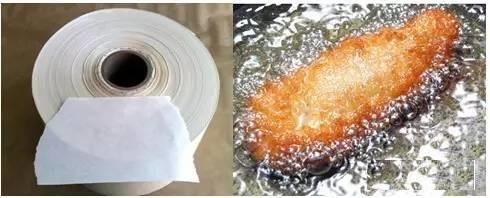Hits: 126 img
1. Daily chemical industry:


Silicone oil can be used as a fabric softener, lubricant, waterproofing agent, finishing agent, etc. in the textile and clothing industry. In order to meet the high-end demand for textiles, chemical product manufacturers are also constantly developing silicone oils that can be used with various functional additives such as waterproofing agents, flame retardants, antistatic agents, and color fixatives. In addition, in order to improve the performance of fabrics, there are silicone products that can be used in the same bath as dyeing, silicone oil for cotton with a cool feeling, silicone products that can improve the feel of fabrics, and silicone-based deepening agents that can give fabrics excellent deepening effects, good storage stability, no effect on color fastness, and good feel.
In addition to being used as an additive in textiles to achieve the functionalization of textiles, silicone products will also be applied to other areas of textiles, such as silicone combined with polyurethane to form a fabric coating; silicone and acrylic polymerization to form fabric printing; silicone combined with organic fluorine to form a waterproof coating on the surface of the fabric, etc.
3. Machinery

Damping and shock absorption: Silicone oil is widely used in motors, electrical appliances, and electronic instruments as an insulating medium that is resistant to heat, arc corona, corrosion, moisture, and dust. It is currently also used as an impregnating agent for transformers, capacitors, and scanning transformers for televisions. It is used as a liquid shockproof and damping material in various precision machinery, instruments, and meters. Since the shock absorption performance of silicone oil is less affected by temperature, it is mostly used in instruments such as aircraft and automobile instruments in occasions with strong mechanical vibrations and large changes in ambient temperature. It is used for shockproof, damping, and stabilizing instrument readings. It can also be used as a liquid spring and in the landing device of the aircraft.
Thermal conductivity: Thermal conductive silicone grease is currently the most widely used thermal conductive medium. It is made of silicone oil as a raw material and is added with fillers such as thickeners. It is an ester formed after heating, decompression, grinding, and other processes. The substance has a certain viscosity and no obvious granularity. The working temperature of thermal conductive silicone grease is generally -50℃~180℃. It has good thermal conductivity, high temperature resistance, aging resistance, and waterproof properties. During the heat dissipation process of the device, after being heated to a certain state, the thermal grease will present a semi-fluid state, fully filling the gap between the CPU and the heat sink, making the two more closely connected, thereby enhancing heat conduction. Under normal circumstances, thermal grease is insoluble in water, not easily oxidized, and has certain lubricity and electrical insulation. Like thermal grease, thermal silicone is also made by adding certain chemical raw materials to silicone oil and undergoing chemical processing. But unlike thermal grease, there is a certain sticky substance in the chemical raw materials added to it, so the finished thermal silicone has a certain adhesion. The characteristic of thermal silicone is that it is hard after solidification, and its thermal conductivity is slightly lower than that of thermal grease.
Cutting fluid: Silicone oil is added to the cutting fluid to play a lubricating and defoaming effect.
Demolding: Due to its non-stickiness to rubber, plastic, metal, etc., silicone oil can be widely used as a demolding agent for the molding of various rubber and plastic products. Its advantages are easy demolding and make the surface of the product clean, smooth, and clear.
4. Medical and food industries

Commonly used medical silicone oils are mostly polydimethylsiloxanes. By utilizing its defoaming properties, it can be made into detumescent tablets for treating abdominal distension and aerosols for treating pulmonary edema. It can also be used as an anti-adhesive agent to prevent intestinal adhesion in abdominal surgery, as a gastric juice defoamer in gastroscopy, and as a lubricant for some medical surgical instruments.
Silicone oil can also be used as an organic silicone defoamer for the food industry. The products emulsified with polysiloxane resins for food use, and other products can be directly used as oil-type products. Such defoaming occasions include fermentation and sugar making, as well as other food production processes to suppress foaming.
Silicone grease is a silicone grease refined by thickening food-grade silicone oil with inorganic thickeners and adding various additives such as antioxidants and anti-corrosion. Food-grade silicone grease is designed for sealing and lubrication of food processing equipment. It does not contain any toxic substances and heavy metals and is absolutely safe for food.
Silicone oil paper is a commonly used packaging paper with a three-layer structure: the first layer is the bottom paper, the second layer is the coating, and the third layer is silicone oil. Since silicone oil paper is resistant to high temperature, moisture and oil, it is generally used for packaging in the food industry.
5. Surface treatment

